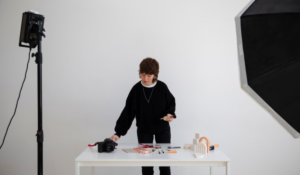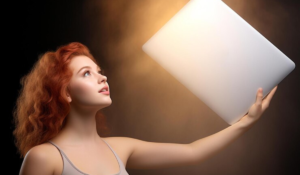What is Clamshell Lighting and How to Use It for Portrait Photos
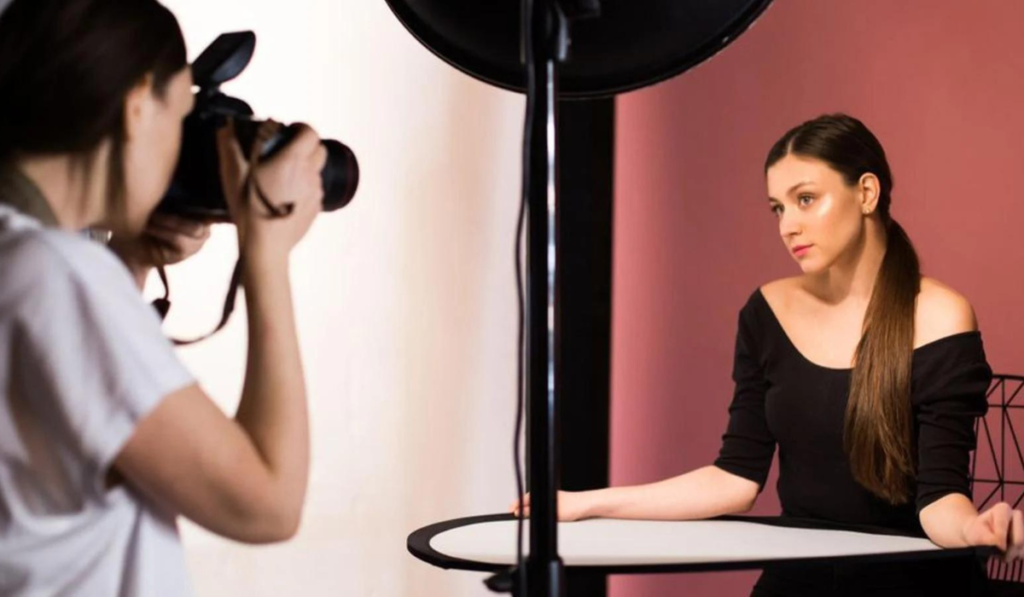
When it comes to portrait photography, achieving the perfect lighting setup can mean the difference between a mediocre shot and a stunning masterpiece. Clamshell lighting is a popular lighting technique among photographers. We will explore what clamshell lighting is, how to set it up, and why it’s such an important tool for portrait photographers in this article.
Lighting for Clamshells:
In clamshell lighting, two light sources are used-one above and in front of the subject, and the other below-to reduce shadows and produce flattering illumination on the face. It is often referred to as a clamshell setup because of its two halves.
Clamshell lighting can be used for the following applications:
-
Skin-flattering effect: Clamshell lighting reduces the appearance of lines and wrinkles on the face, resulting in more pleasing skin texture.
-
Setup is simple and portable with clamshell lighting, which requires minimal equipment.
-
It is easy to transport clamshell lighting setups due to their modest equipment requirements, making them suitable both for studio and location work.
-
With proper adjustment of light height, clamshell lighting can minimize glare and reflections in eyeglasses, ensuring a clear and polished final product.
Setup of a Clamshell:
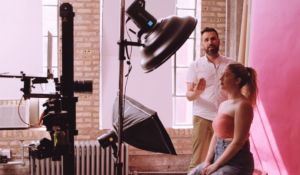
A typical clamshell lighting setup involves placing one main light above and in front of the subject, and placing a reflector below to bounce light onto the face. For optimal positioning of the main light, a boom or extension arm is recommended. It is also possible to enhance the overall look of the portrait by adding a second light for background illumination.
The main light modifiers are:
A clamshell setup can use a variety of modifiers, with strip boxes providing advantages such as providing extra clearance and producing the desired light quality in locations with low ceilings. Depending on the situation and the photographer’s preferences, different modifiers can be used.
The following reflector options are available:
Angled “wings” or curved surfaces provide additional side-lighting, reducing shadows and evenly illuminating the face. Westcott’s Eyelighter, for example, provides curved reflector surfaces with a variety of material options.
Two-light clamshell setup:
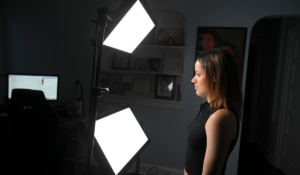
A clamshell setup offers more control over light intensity than a reflector alone. Various photography needs, such as fashion and advertising, can be met with the precise adjustment of each light source.
In conclusion:
As a result, clamshell lighting offers flattering results with minimal equipment for portrait and headshot photography. Whether you’re a seasoned professional or just starting out, mastering clamshell lighting will improve your portraits. Clamshell lighting deserves a place in every portrait photographer’s toolkit for its simplicity, versatility, and ability to produce impressive results.


